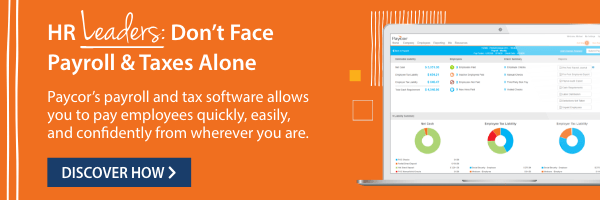Payroll compliance is one of the most important, and most challenging, aspects of running a business. Evolving federal, state, and local laws, shifting court rulings, and emerging regulatory trends mean that employers must be more vigilant than ever.
What is Payroll Compliance?
In a nutshell: payroll compliance means doing payroll in a legally correct, timely, and well-documented manner to avoid penalties, audits, and legal exposure.
More deeply, the term “payroll compliance” refers to an employer’s obligation to follow all applicable laws, regulations, and administrative rules governing how employees are paid, how withholdings are managed, how records are maintained, and how tax and reporting responsibilities are met. It encompasses federal, state, and local requirements—everything from Social Security and tax withholding to overtime, minimum wage, wage garnishment, and recordkeeping.
Basics of Payroll Compliance
At a high level, maintaining payroll compliance requires execution (and continuous oversight) of several core tasks. Some primary tasks include:
- Accurately tracking hours worked for nonexempt employees
- Classifying workers properly (employees vs. independent contractors; exempt vs. nonexempt)
- Calculating withholdings for federal, state, and local taxes, and remitting them on time
- Determining and paying overtime and minimum wage correctly
- Filing required returns and reports (e.g., Form 941, W-2s, unemployment reports)
- Keeping thorough and easily auditable payroll and employment records
- Staying on top of changes in tax rates, wage laws, and regulatory updates
- Conducting periodic audits or reviews of pay practices to detect errors or gaps
Importance of Payroll Compliance
- Legal risk mitigation: Noncompliance can trigger audits, fines, back wage assessments, and lawsuits.
- Employee trust and satisfaction: Mistakes in pay or withholding can damage morale, erode trust, and lead to turnover.
- Financial predictability and accuracy: Proper compliance helps avoid surprise liabilities (e.g., interest, penalties).
- Regulatory reputation: Demonstrating compliance fosters credibility with regulators, stakeholders, and your workforce.
- Operational efficiency: A disciplined, compliant payroll process scales better and can reduce administrative errors.
Payroll Compliance Laws, Regulations, and Requirements
To stay compliant, employers must follow a range of federal, state, and local laws governing how employees are classified, paid, and taxed. Each regulation serves a distinct purpose, and together they form the foundation of lawful payroll practices. Below are the federal statutes every employer should understand and adhere to.
FICA
The Federal Insurance Contributions Act (FICA) requires employers and employees to contribute jointly to Social Security and Medicare. Employers must withhold the employee’s portion from each paycheck and remit a matching amount—6.2% for Social Security and 1.45% for Medicare—based on applicable wage limits.
Employers are also responsible for keeping up to date on annual wage base caps (for example, the 2025 Social Security wage base of $176,100) and ensuring that additional Medicare surtaxes are correctly applied when wages exceed threshold levels. FICA taxes must be deposited on time, reported on the appropriate IRS forms (such as Form 941), and supported by accurate, up-to-date payroll records.
FUTA
Under the Federal Unemployment Tax Act (FUTA), employers pay taxes to fund unemployment benefits for workers who lose their jobs. Unlike FICA, FUTA taxes are paid entirely by employers; there is no employee withholding. Compliance requires maintaining detailed payroll records that track total wages and taxable earnings, filing annual Form 940, and making timely deposits to the IRS. Employers should also monitor applicable credits and state unemployment programs, since these can offset portions of the FUTA liability.
FLSA
The Fair Labor Standards Act (FLSA) establishes nationwide standards for minimum wage, overtime pay, recordkeeping, and child labor.
To stay compliant, employers must pay at least the federal minimum wage to all nonexempt employees and provide overtime pay at a rate of 1 ½ times regular hourly wages for hours worked beyond 40 in a workweek. The FLSA also mandates accurate timekeeping and detailed payroll records. Exemptions for executive, administrative, professional, and highly compensated employees must meet both the salary and duties tests outlined by the Department of Labor (DOL). Misclassifying employees as exempt when they are not a common and costly compliance error.
Equal Pay Act
The Equal Pay Act prohibits wage discrimination based on sex, requiring that men and women performing substantially equal work in the same workplace receive equal pay. To maintain compliance, employers should routinely evaluate compensation structures and document legitimate, nondiscriminatory reasons for any pay differentials, such as differences in seniority, merit, or productivity. Many states also have their own pay equity laws, which may impose stricter requirements. Regular pay audits, coupled with transparent compensation practices, help employers stay compliant and promote workplace equity.
Federal Income Tax Compliance
Every employer has a legal duty to withhold the correct amount of federal income tax from employee wages and remit those funds to the IRS on time. Withholding is based on information provided on the employee’s Form W-4 and the current IRS tax tables (Publications 15 and 15-T). Employers must deposit withheld taxes according to IRS timelines, file quarterly or annual returns (typically Form 941 or 944), and issue accurate year-end W-2 forms. Because withholding requirements can change when an employee updates their W-4 or when tax tables are revised, payroll systems and processes must be continuously updated to help ensure accuracy.
Important 2025 Payroll Compliance Updates & Changes
Here are key updates and developments for 202 that payroll and HR teams must watch. Some reflect updates already in place; others are court- or legislative-driven and subject to further changes.
- The Social Security taxable base wage increased to $176,100 for 2025. The base for 2026 is projected to be $183,600.
- Standard deductions for IRS federal income taxes in 2025 increased to $31,500 for married couples filing jointly; $15,750 for single filings or married filing separately; $23,625 for a head of household or qualifying widow(er). In 2026, the deductions are expected to increase to $32,000 for married couples filing jointly; $16,100 for single filings or married filing separately; and $24,150 for a head of household or qualifying widow(er)
- Limits for qualified fringe benefits for tax year 2025 are $325 for parking; $325 for commuter highway vehicle and transit pass (combined); $17,280 for adoption assistance.
- Qualified retirement contribution limits were also updated. Elective deferral limits for 401(k), 403(b) and 457 plans increased to $23,500; annual IRA contribution limit remained at $7,000; the annual compensation limit increased to $350,000 for 401(k), 403(b), SEP and profit-sharing plans; the limit for defined benefit plans increased to $280,000; contribution limits for SIMPLE plans increased to $16,500, while the catch-up limit remained at $3,500.
- The latest HSA contribution limits are $4,300 (self-only), $8,550 (family), and the catch-up contribution limit (age 55 or older) is $1,000.
- FSA limits increased to $3,300. The carryover limit for cafeteria plans is $660. Dependent Care FSA is $2,500 for those married filing separately and $5,000 for those who are single or married filing jointly.
- After much back and forth, the federal overtime salary threshold increase was shot down and the threshold remains $35,568 annually ($684 per week).
Given ongoing litigation and evolving legislation, employers must monitor official DOL guidance, court rulings, and other regulatory updates before making compensation or classification changes.
Payroll Compliance State Requirements
State and local payroll compliance rules often layer on top of federal rules. In other words, you must comply with both federal and state/local requirements, whichever is more protective for employees. States may set:
- Minimum wage rates (often higher than the federal minimum)
- State income tax withholding obligations
- State unemployment insurance (SUI) rates and wage bases
- Paid leave laws (e.g., paid sick leave, paid family leave)
- Wage payment timing and pay frequency requirements
- Pay transparency, pay equity, and reporting obligations
- Local or municipal payroll taxes, if applicable
Because each state has its own regulatory body (often a Department of Labor or Department of Revenue), compliance will be based on your specific location.
Changes to State Payroll Laws in 2025
Below are some notable state-level payroll compliance changes that were enacted in 2025 or are slated to take place in 2026. It’s important to always double-check jurisdiction-specific sources before implementing.
California
Assembly Bill 2123 and Paid Family Leave (PFL) Vacation Requirement —Beginning in 2025, Assembly Bill 2123 removed the requirement for employees to use accrued vacation time before accessing Paid Family Leave benefits in California.
Delaware
Delaware Paid and Family Medical Leave — Withholdings began Jan. 1, 2025 (benefits start in 2026).
Michigan
Michigan Paid Medical Leave (effective Feb. 21, 2025) — Employers with 50+ employees must provide a minimum of 40 paid medical leave hours per year.
Maine
Maine Paid and Family Medical Leave — Withholding began Jan. 1, 2025 (benefits start in 2026).
New York
New York Paid Family Leave Program — Contributions increased to 0.388% of an employee’s gross wages up to a maximum annual contribution of $354.53.
Washington
Washington Paid Family & Medical Leave — The total premium rate increased to 0.92% of wages up to the Social Security cap of $176,100. Employers pay 28.48% of the total premium, and employees pay the remaining 71.52%.
Additional 2025 state changes:
- Twenty-four states increased their minimum wages effective Jan. 1, 2025, or midyear. For example, California’s went to $16.50, Illinois to $15.00, Colorado to $14.81. Florida’s increased to $14.00 Sept. 30, 2025.
- Several states have updated their state unemployment wage bases (i.e., the maximum earnings subject to taxable wages).
- Local jurisdictions continue to pass new paid leave, paid sick days, or pay transparency laws, especially in municipalities and counties.
- Some states have introduced or are adjusting pay stub and itemization requirements, or notice and posting requirements (e.g., updated labor law posters).
Because state-level rules are incredibly dynamic and vary widely, employers operating in multiple states must maintain a system or partner that tracks these updates.
Payroll Non-Compliance Consequences and Penalties
Noncompliance in payroll can lead to severe and varied consequences. Below are some of the key risks and penalties:
- Back wages: Employers may be required to pay unpaid wages, including overtime, for affected employees.
- Liquidated damages and interest: Additional payments beyond back wages to compensate employees for delays.
- Civil penalties and fines: Government agencies (DOL, state labor departments) may assess per-violation or aggregate fines.
- Criminal liability: In extreme cases (e.g., willful violation of tax rules), criminal charges may apply.
- Tax assessments and interest: For unpaid or late remittance of payroll taxes, penalties, interest, and assessments may accrue.
- Legal fees and litigation costs: Employee lawsuits, class actions, or audits can be expensive.
- Negative affect on business reputation: Compliance violations reflect poorly internally and externally when egregious actions make the news.
- Operational disruption and audits: Government audits or investigations may consume executive and HR bandwidth.
- Injunctions or enforcement actions: In some cases, agencies may seek injunctive relief or require corrective payroll oversight.
Payroll Compliance Risks to Look Out For
Even with the best intentions, employers often fall into certain compliance traps. Being aware of these risks can help you tighten your payroll practices.
Exemption Classification Error
Misclassifying a nonexempt employee as exempt (or vice versa) is a frequent and costly mistake. Employers must ensure that exempt employees meet both the salary basis test and the duties test (executive, administrative, professional) under FLSA (or state equivalents).
Misclassifying Contractors and Employees
Improper classification of workers as independent contractors (versus employees) can lead to liability for unpaid taxes, benefits, and penalties. Review the factors courts and agencies use (behavioral control, financial control, relationship) and document your decisions.
Disregarding Pay Equality
Failing to audit compensation for gender (or other protected characteristic) pay gaps can lead to employee claims under the Equal Pay Act, state pay equity laws, or discrimination statutes. Employers should proactively review and justify any differences in pay.
Workers’ Compensation Insurance
Some states require employers to carry workers’ compensation insurance. Failure to maintain proper coverage or report injuries can lead to fines, liability for medical judgments, and inability to defend against claims.
Payroll Compliance Best Practices to Avoid Mistakes
Because payroll compliance is an ongoing and evolving process, it’s imperative that businesses take proactive steps rather than react only after problems arise. Below are several best practices to embed into your operations.
Use Payroll Software
Modern payroll systems automate tax calculations, withholding schedules, remittances, and reporting. They can also prompt for changes, flag anomalies, and reduce human error.
Use a Payroll Calendar
Establish a robust, shared payroll calendar that includes deadlines for withholding, deposits, tax filings, benefit deductions, and compliance tasks for everyone involved in the process. Clear scheduling reduces missed deadlines, late filings, and penalties.
Perform Regular Payroll Audits
Regular internal audits (quarterly or semiannually) help uncover classification errors, over/under payments, omitted taxes, and discrepancies. Use checklist-driven audits and adjust policies as needed.
Monitor Payroll Legislation
Assign responsibility (e.g., HR or legal) for tracking upcoming regulatory, judicial, or legislative changes at federal, state, and local levels. Subscribing to regulatory alerts, industry newsletters, and compliance services is never a bad idea.
Document Payroll Processes
Maintain written, versioned procedures for payroll processing, approvals, classifications, and adjustments. Solid documentation helps during audits, investigations, or staffing transitions.
The Role of HR in Payroll Compliance
Human Resources plays a pivotal role in payroll compliance, working hand in hand with payroll and finance teams to help ensure every employee is paid accurately, legally, and on time. While payroll executes the calculations, HR provides the structure and oversight that keep those processes compliant with federal, state, and local regulations.
From the moment an employee is hired, HR is responsible for collecting essential documentation such as Form W-4 for tax withholdings and Form I-9 for employment eligibility, as well as confirming proper worker classification. Ensuring that everyone is correctly categorized as exempt or nonexempt under the FLSA, and as an employee or independent contractor under IRS rules, is one of HR’s most important compliance duties.
HR also develops and communicates company pay policies, including overtime, timekeeping, and paid leave procedures. When laws change, such as updates to minimum wage, overtime thresholds, or new state paid leave programs, HR must interpret the regulations, adjust internal policies, and inform both managers and employees. This proactive communication helps prevent misunderstandings and compliance lapses before they occur.
In addition, HR oversees payroll-related recordkeeping, ensuring that wage, hour, and tax data are securely stored for required retention periods and easily accessible during audits or reviews. Proper documentation not only supports compliance but also helps protect the organization in the event of disputes or investigations.
Finally, HR helps foster a culture of compliance by training managers on wage and hour practices and partnering with payroll to help ensure accurate data entry for raises, deductions, and time reporting.
Sound Overwhelming? Use Paycor to Simplify Payroll Compliance
Yes, payroll compliance is complex, but you don’t have to face the process alone. Paycor Payroll Software offers a suite of compliance-oriented tools and solutions that help mitigate risk and reduce administrative burden.
- Tax Compliance Dashboard & Alerts: Paycor’s tax team monitors federal, state, and local changes, automatically updates tax rates, and issues proactive alerts when items need attention.
- Audit Defense Support: Paycor provides audit defense support (at no additional cost), providing an added layer of protection in case of tax or regulatory review.
- Unified Platform: Paycor integrates HR, payroll, benefits, and compliance workflows so that data flows seamlessly and errors from data silos are reduced.
- Compliance and Regulatory Solutions: Paycor offers compliance-focused modules for regulatory compliance, employment verification, report generation (e.g., EEO-1), and proactive risk monitoring.
- Learning Management & Training: Our Learning Management System (LMS) provides up-to-date compliance training modules (e.g. recruiting, anti-bias, employment law) to keep HR and managers aligned.
- Payroll: Paycor’s payroll solution itself handles automatic calculations, withholding, tax remittance, and supports changes across jurisdictions.
By using Paycor, businesses can reduce manual compliance overhead, stay current with regulatory change, and better guard against risk.

Payroll Compliance FAQs
Still have questions about proper payroll compliance? Read on.
Who is responsible for maintaining payroll compliance?
Employers are ultimately responsible for payroll compliance. In most organizations, HR, payroll, and finance teams share accountability for ensuring that employees are classified correctly, taxes are withheld and remitted on time, and all wage and hour laws are followed. Even when payroll is outsourced or automated, the employer remains legally responsible for accuracy and compliance.
What is the role of a payroll compliance manager?
A payroll compliance manager oversees all processes that help ensure payroll is accurate, timely, and compliant with federal, state, and local regulations. Their responsibilities typically include auditing payroll data, monitoring legislation, managing tax filings, maintaining documentation, and training staff on compliance procedures. This role bridges HR, payroll, and accounting to minimize risk and help ensure consistent adherence to the law.
What is a payroll compliance audit?
A payroll compliance audit is a systematic review of an organization’s payroll processes to confirm accuracy, consistency, and compliance with applicable laws. Auditors, either internal or external, examine pay rates, employee classifications, overtime, deductions, and tax filings. The goal is to detect errors, identify risks, and ensure that payroll policies and systems align with current regulations.
What are the laws governing payroll?
Payroll is governed by a combination of federal, state, and local laws. Key federal statutes include the Fair Labor Standards Act (FLSA), Federal Insurance Contributions Act (FICA), Federal Unemployment Tax Act (FUTA),the Equal Pay Act, and the Internal Revenue Code governing income tax withholding. Many states and municipalities also enforce their own wage, tax, and leave laws that employers must follow in addition to federal requirements.
Why is payroll compliance legislation important?
Payroll compliance legislation protects both employers and employees. It helps ensure workers are paid fairly and on time, safeguards employee benefits and tax withholdings, and provides structure for recordkeeping and reporting. For employers, compliance reduces the risk of audits, penalties, and legal disputes while helping maintain trust, transparency, and operational efficiency.









